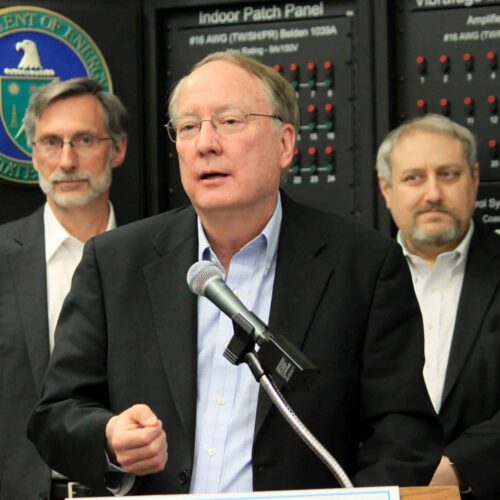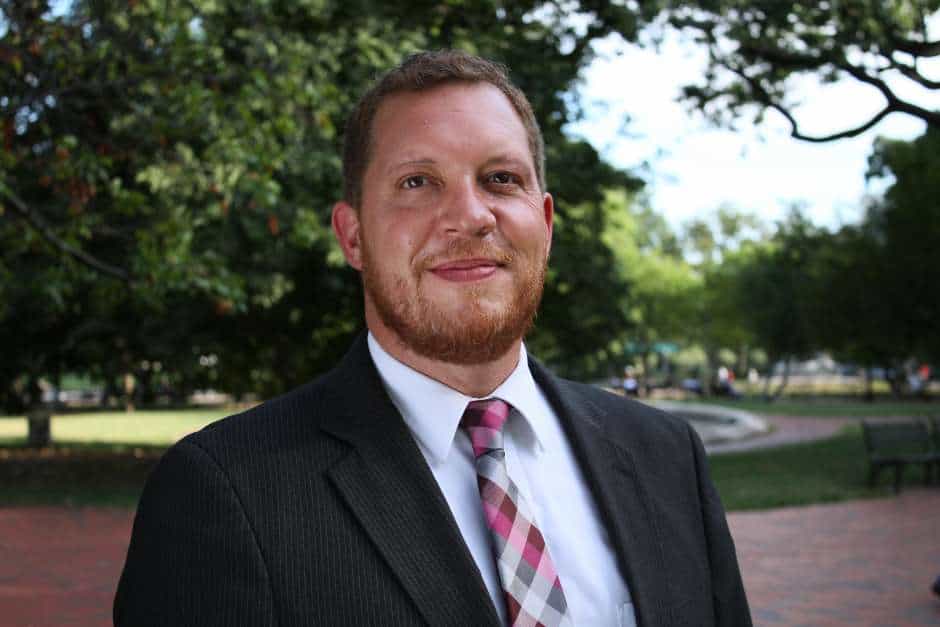Introduction
The head of the federal agency that produces U.S. nuclear weapons has privately proposed to end public access to key safety reports from a federal watchdog group that monitors ten sites involved in weapons production.
Frank Klotz, administrator of the Energy Department’s National Nuclear Security Administration, made the proposal to members of the Defense Nuclear Facilities Safety Board in an October 13 meeting in his office overlooking the Smithsonian Castle on the National Mall, multiple U.S. officials said.
Klotz contended that recent media stories about safety lapses that relied partially on the board’s weekly disclosures were potentially counterproductive to the NNSA’s mission, the officials said. His solution was presented as the Trump administration considers an acceleration and expansion of nuclear warhead production at the federally-owned sites inspected by the board in eight states, including California, New Mexico, South Carolina, and Tennessee
Four of the safety board’s five members heard Klotz’s appeal, and one of them — Bruce Hamilton, a Republican — responded by drafting and briefly circulating a proposal among the members to stop releasing the board’s weekly and monthly accounts of safety concerns at nuclear weapons factories and laboratories.
Under Hamilton’s proposal, these accounts of accidents and problematic incidents — prepared by board staff that routinely visit or are stationed at these federally-owned sites — would be replaced by oral reports by those staff members to their superiors in Washington, which would not be divulged to the public, according to multiple federal officials, who asked not to be named due to the sensitivity of the topic under discussion.
The proposal represented the second effort by federal officials in recent months to curtail public access to information about persistent safety problems in the nuclear production complex, which the Center for Public Integrity documented in articles published between June and August.
In June, the Defense Nuclear Facilities Safety Board’s chairman, Sean Sullivan — Hamilton’s fellow Republican on the board — secretly urged the Trump administration to eliminate the safety board altogether. The White House has said it will address the idea early next year, but some lawmakers have already expressed opposition.
The Center’s articles detailed a series of alarming safety problems, including the mishandling of plutonium, a radioactive explosive, at Los Alamos and a federal laboratory in Idaho; the mis-shipment of hazardous materials, including nuclear explosive materials; and the repeated contamination of work areas and scientists by radioactive particles. The articles were based in part on the board’s reports.
The federal facilities where nuclear weapons are produced are run by corporations that have collectively earned more than $2 billion in profit from the work over the past decade. Many of the firms’ officials have expressed chagrin at occasional publicity about their mishaps and accidents.
Hamilton withdrew his proposal on Oct. 19 — the same date that CPI disclosed in an article co-published with USA Today Sullivan’s plan to eliminate the safety board. Reached by telephone, Hamilton declined comment on the proposal or its withdrawal.
Klotz’s proposal drew criticism from several independent observers of the board’s work. Greg Mello, director of the Los Alamos Study Group, a nonprofit organization that closely monitors the government’s activities at nuclear sites in New Mexico, said the reports at issue “provide almost the only window into the safety status of defense nuclear facilities.” Without them, he said, the public might never know if an accident occurs.
“It’s not [Klotz’s] job to tell the safety board how to do their work,” Mello said. “Shame on him.”
Bob Alvarez, a former senior policy adviser and deputy assistant secretary at the Energy Department, said “this is regressive behavior, rolling back to the old days of the Cold War. The logic behind this is that what the public doesn’t know can’t hurt us, and there’s nothing to be gained by the public knowing what we’re doing. The site reports make sure that the DOE [Department of Energy, which includes the NNSA] does not…[rely only on] blind, undocumented faith in its contractors.”
Klotz, 67, is a retired Air Force lieutenant general and former commander of the Air Force’s Global Strike Command — which is responsible for nuclear bombers and missiles — who was appointed as NNSA administrator and Energy undersecretary for nuclear security by President Obama in April 2014. He was retained in the role by President Trump. The NNSA finances and manages the production and maintenance of all U.S. nuclear warheads, a $10.8 billion-a-year effort that Trump has said he wants to fund more richly.
Asked about Klotz’s proposal, his spokesman Gregory Wolf declined any direct comment but wrote in an email that, “to ensure an open line of communication, NNSA and DNFSB leadership meet periodically…The conversations traditionally have been casual and informal in nature and are not intended nor designed to arrive at any conclusions or decisions.”
During his meeting with safety board members, according to the officials, Klotz pointed in particular to a Sept. 22 article published in The Santa Fe New Mexican that described persistent safety shortcomings at the government’s laboratory in Los Alamos, the birthplace of the U.S. nuclear arsenal. The article was based on a Sept. 1 public report by the safety board that faulted workers for positioning plutonium so closely that it risked an uncontrolled nuclear reaction, which could be deadly to anyone nearby — a persistent lapse the lab has struggled to overcome. The report also disclosed that several workers at the lab’s Plutonium Facility had been accidentally contaminated by radiation.
The officials said Klotz told the safety board members that if safety lapses like those depicted in the article continued to attract public attention, nuclear workers will grow reluctant to expose their corporate employers to public embarrassment by telling the board about unsafe conditions.
His argument, in short, was that only secrecy could encourage accountability for the corporate managers of the nuclear weapons complex.
The Santa Fe newspaper report that irritated Klotz built on CPI’s recent reporting about unsafe handling of plutonium that has plagued Los Alamos for more than a decade, placing workers in danger and causing setbacks to the lab’s national security mission. Soon after those accounts were published, Los Alamos National Laboratory Director Charles McMillan and Kim Davis Lebak, the top NNSA official assigned to oversee work at Los Alamos, announced plans to retire.
The safety board was created by Congress in 1988 to foster public trust in nuclear weapons work by providing independent oversight into its workplace practices. It is authorized to recommend safety improvements to the Energy secretary, based on its inspections; the secretary, in turn, is not obligated to accept the ideas, but must respond publicly. The public reports that form the basis of these recommendations do not divulge the names of workers that bring safety lapses to the board’s attention.
Government officials familiar with the on-site inspectors’ weekly reports say they are one of the most effective ways of inspiring better behavior at the weapons facilities, because the contractors intensely dislike public criticism. But the contractors have complained bitterly that the public nature of the discussion goads the NNSA into imposing more costly safety precautions than their managers feel are warranted.
Read more in National Security
Nuclear Negligence
Key sites proposed for nuclear bomb production are plagued by safety problems
Billions of dollars are at stake in a forthcoming Trump administration decision, but contender sites Los Alamos and Savannah River have struggled to handle plutonium safely
Nuclear Negligence
Chairman of nuclear weapons oversight agency steps down amid internal turmoil
Morale plummeted after Republican Sean Sullivan proposed to Trump that the agency — a frequent target of defense contractors — be shuttered


Join the conversation
Show Comments